It’s the busiest time of the year at Myrtle Farm in Somerset home of Thatcher’s Cider. From August to November, the apples ripen and harvested and despatched for processing. The numbers involved are astonishing; the equipment required from the simplest to the most complex. This fourth generation cider family are definitely not resting on their laurels.
Visiting the Exhibition Orchard
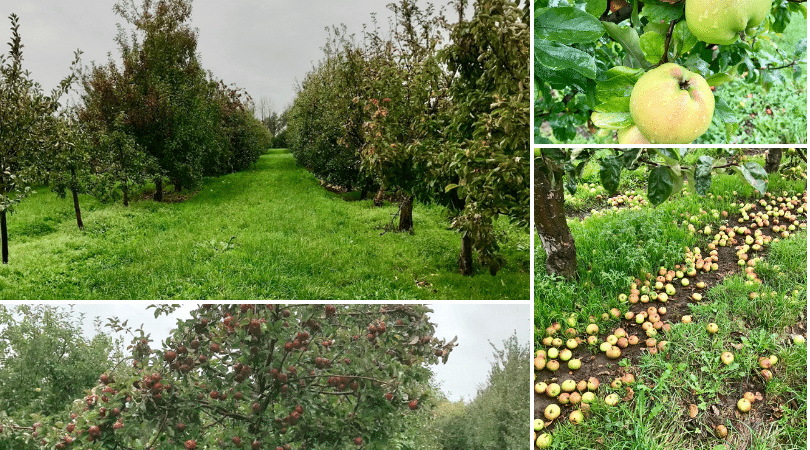
On a rather cold and wet October morning, a group of Bristol Bloggers gathered in the exhibition orchard at the start of our tour. As far as the eye could see stretched apple trees. This is an important ‘library’ of 452 apple varieties (two of each sort). With new types of cider in mind, the blenders use these apples as a reference and when they find a variety of particular interest, they scale up and grow a larger number of trees, enough for small production runs. It’s not a quick process, it will take 5 or 6 years before it starts producing apples. Chris who is in charge of the orchard explains that all the trees are grafted onto specific root stocks which will determine the growth required.
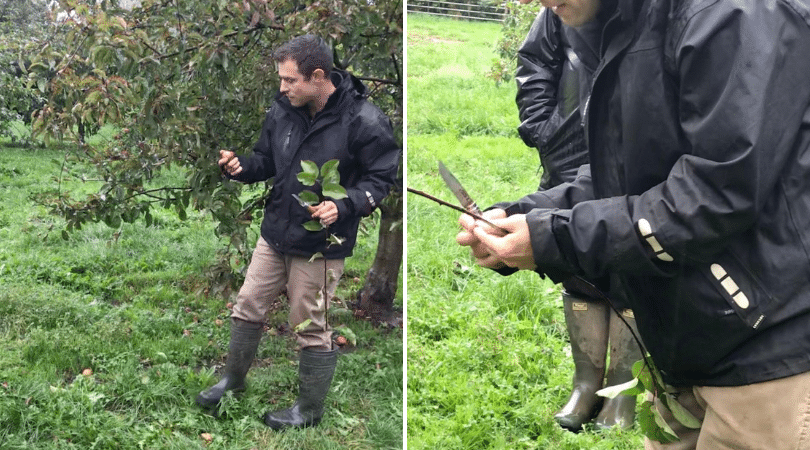
Looking down the rows, some apples are still on the trees as they’ve not quite ripened, others have fallen on the ground. But nothing goes to waste, these are collected up as others are harvested. The trees are pruned very specifically to allow machines to do the harvesting and even shaking the trees to ensure all are collected.
The apples arrive for processing
The quantities of apples arriving is astonishing. In addition to apples harvested from Thatcher’s own 500 acres of orchards, they work closely with other suppliers across the south west to source the apples. The suppliers are incentivised to supply clean and ripe fruit. Thatchers pride themselves in paying their suppliers a week following delivery.
We watch as some Thatchers apples are delivered to the bays. The trailer holds 7 tons of mixed apples. With four apples in each bottle of cider, imagine how many bottles that might fill. However, when you see the enormous trailers arrive from their suppliers which hold 25 tons of apples this amount is dwarfed. There will be 750 trucks delivering from 35 suppliers supplying a total of 35,000 tons over the harvesting period. The ripeness is tested on delivery.

Thatchers cider is made both from dessert apples and cider apples. For some ciders, single varieties are used. Others only dessert or cider apples or a mixture of the two. You might be wondering about the logistics of processing so many apples. The apples are indeed washed, mashed up and juiced as soon as possible after delivery, but then the resulting mixture is concentrated. Cider is then made from the concentrate throughout the year using yeast that is unique to Thatchers.
We watch the cider apples being washed and moved into the processing plant, simply by gravity.
Making cider
Understandably, we are unable to take pictures inside the processing plant. Suffice to say the scale and amount of equipment is jaw dropping. We pass a “spaghetti’ filter where the cloudy mixture is turned crystal clear. (Haze, the cloudy cider has some ‘cloudiness’ added back in). We turn into a new area where enormous containers are used for storage. This year’s crop has been especially good, so these are already filling up quickly.
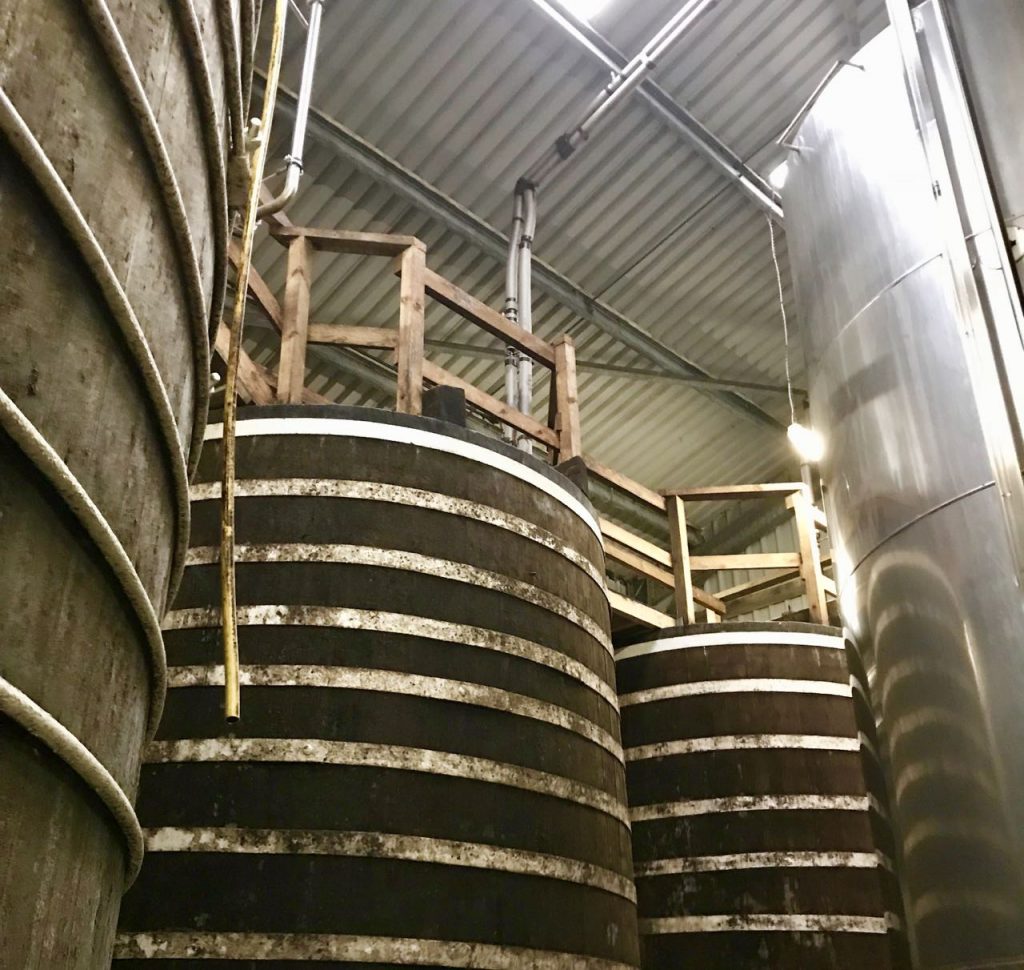
We then head off to marvel the oak vats where some of the cider is matured. These are 160 years old and 30 ft tall and still going strong. Apparently the trick is to keep them filled with liquid to avoid drying out.
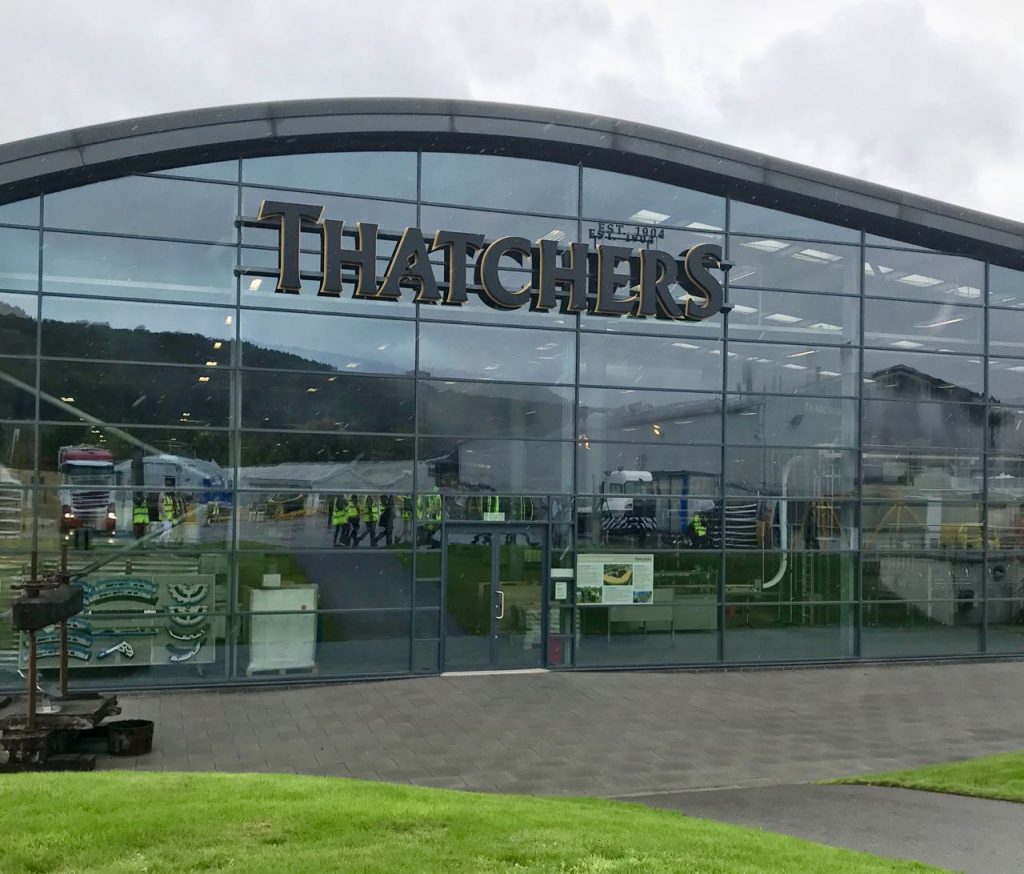
Lastly we head over to the new canning line. As it is a weekend, it is not in use, but we see it in action on a video – the speed and scale again astonishing. More huge numbers, 57 million cans of cider are canned each year, and about half that amount bottled.
Cider Tasting
Of course, with all this attention to detail, the cider needs to be tasted. Each Friday at 12:30 precisely, the cider is tasted to ensure it has met peak perfection. It never leaves the mill without being tested first.
Our tour ended, we head off for a tasting session. I had previously particularly enjoyed the Katy cider so was particularly keen to discover other ciders that would suit my palate. I wasn’t disappointed. I particularly enjoyed: Redstreak is made only from the cider apple of the same name. It has a slightly peppery taste and more of what you might call a ‘traditional’ cider flavour. Old Rascal also includes the Redstreak apple, with Dabinett (which we tried in the orchard) and Tremletts. It is medium dry. My third favourite is Rose, made with Katy Apples. This is high in alcohol and very drinkable. I’d have to pace myself with this one!
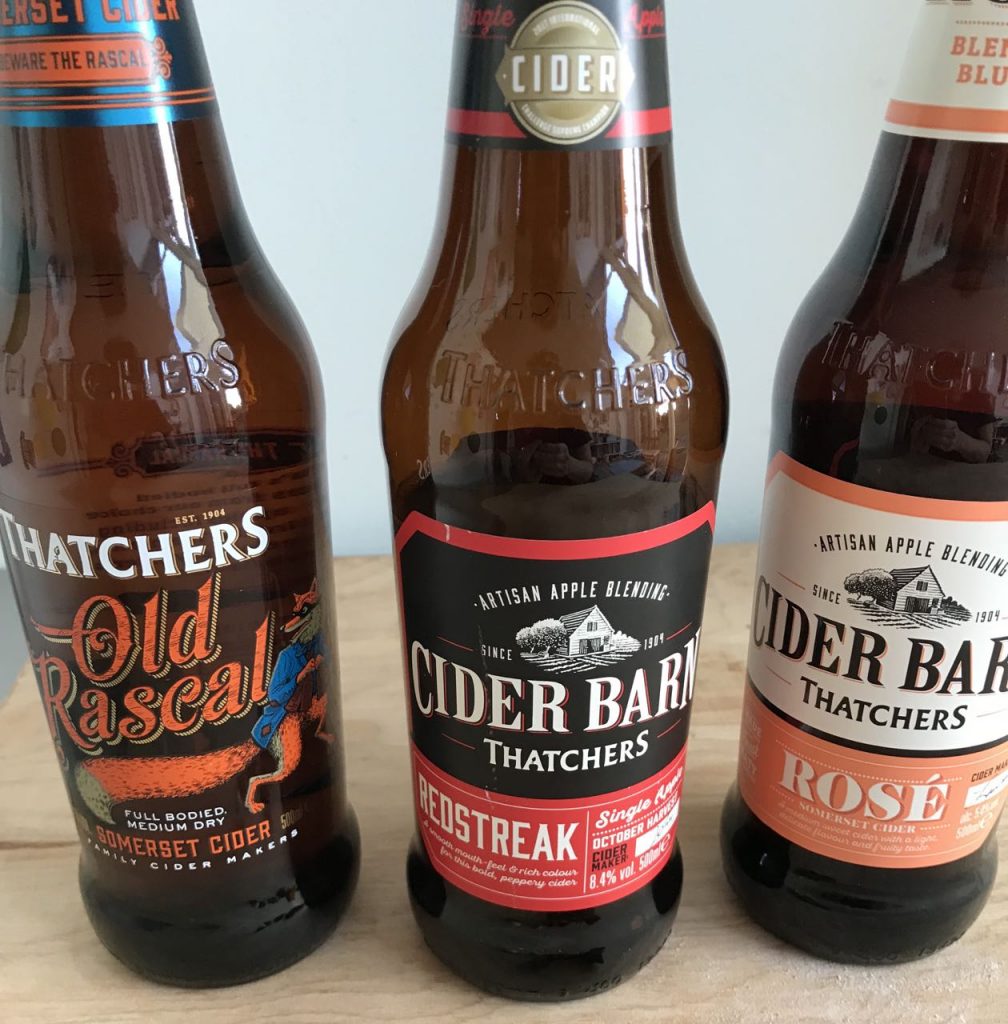
Lunch at the Railway Inn
We retired to the Railway Inn for a very fine lunch indeed. Head Chef Sam Coltman, has created one of the most tasty menus I have had at a pub in a long while, including cider in the recipes (of course) wherever possible. I shall be dreaming of my guinea fowl dish for a long time. It came with it’s own pie! The starters and desserts were as inventive and delicious mains.

Find out more
The Thatchers cider tour runs every Wednesday, Thursday, Friday and Saturday from 11 am at £12 pp including tastings, but not the Exhibition Orchard, starting at the Railway Inn. Do book well in advance as they are very popular.
Thatcher’s Cider
Myrtle Farm
Station Rd
Sandford
BS25 5RA
Follow Thatchers cider on Twitter and Instagram
The Railway Inn is open for lunch and dinner seven days a week
The Railway Inn
Sandford,
Somerset
BS25 5RA
Telephone: 01934 611518
Email: info@therailwayinn.com
A huge thank you to Thatchers Cider for inviting me to experience cider making at Myrtle Farm.

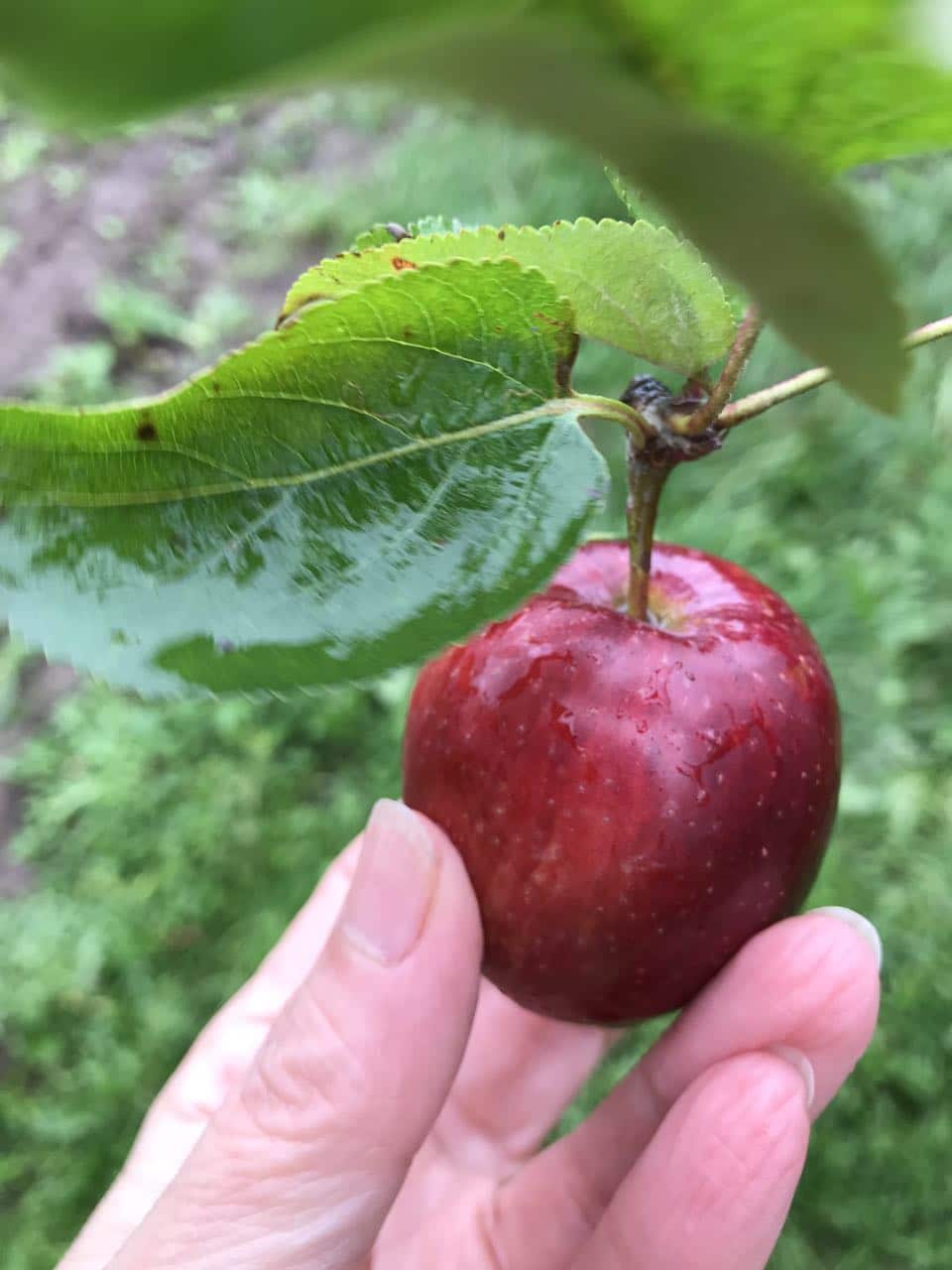
All good questions. I felt on the day that we were able to ask as many questions as we liked. We did walk through the production area, so didn’t think that anything was being hidden. Are you setting up a cider business?
I am sure you had a good day.
Did you ask why you weren’t allowed to take pics of the processing plant?
Did you ask if their end product is 100% cider or has any added water?
Did you ask if they ever use foreign “concentrate”?
Did you ask them how long their “cider” spends maturing?
Everything may look big and shiny and the lunch enjoyable, but sometimes one needs to delve below the surface!
The questions I ask could equally be asked of many other “cider” producers – I am not just singling them out!